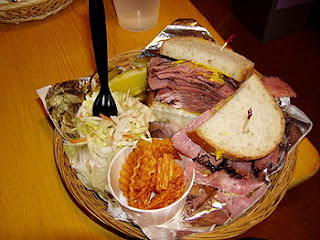2011 Tournament of Roses: Brought to you by Corporate America and Foreign Flowers
Credit: Crooks and Liars
The Tournament of Roses has always been a huge corporate event. Even back when boomers worked on those floats it was the province of big corporations with a smattering of ingenuity from schools like Cal Poly. Though it was corporate, it was also local. Flowers came from local growers. Float decorators worked for local charities and youth groups. It was very much a California event.
Today, not so much. In a LA Times report about Honda being the first to use a hybrid motor to power their float, they note that today's Tournament of Roses is neither green nor local.
Leading Saturday's 122nd Tournament of Roses will be a 35-foot fairy tale castle called "A World of Dreams," the first float to be powered by fuel-efficient hybrid technology. And the pace car will be the fuel-sipping Honda CR-Z.
But behind the World of Dreams will be a whirl of planet-warming emissions: 46 floats powered by V-8 engines, some supplemented with gasoline-powered motors for moving parts, that are expected to burn through about 800 gallons of gasoline by the time they finish their 2.5-mph cruise along the 5.5-mile route. Mixed in are 80 auxiliary trucks, 145 fleet cars and dozens of law enforcement vehicles — all of them powered solely by old-fashioned fossil fuels.
Festooned to the floats are an estimated 20 million flowers transported from around the world in aircraft and trucks: orchids from Asia; dried everlasts from Africa; roses from Colombia and other South American countries; and tulips from Holland.
The reason for the foreign-grown flowers? Trade agreements, of course.
The exact "carbon footprint" of the parade and related festivities is difficult to calculate. But California growers are quick to point out that their home-grown ingredients have been forsaken for energy-intensive but still less expensive imports. Those flowers became increasingly available after 1991, when the United States struck a trade agreement with Colombia and Ecuador in an effort to curtail cultivation and processing of coca for cocaine. That gave cut-flower farmers and floral exporters duty-free access to the U.S. market, where 70% of flowers sold now hail from Colombia, according to the California Cut Flower Commission.
I don't think anyone could take all of the magic away from the Tournament of Roses for me. It's too much a part of my New Year's Day tradition, and always will be. But I live in a small city sandwiched between strawberry and flower farms and know what a price they pay when flowers are exported from other countries. That, and parade organizers' reluctance to make the shift to hybrid motor technology to power the floats makes the whole spectacle a little less impressive.
C'mon, Tournament organizers. Set the trends, don't buck 'em.
The Tournament of Roses has always been a huge corporate event. Even back when boomers worked on those floats it was the province of big corporations with a smattering of ingenuity from schools like Cal Poly. Though it was corporate, it was also local. Flowers came from local growers. Float decorators worked for local charities and youth groups. It was very much a California event.
Today, not so much. In a LA Times report about Honda being the first to use a hybrid motor to power their float, they note that today's Tournament of Roses is neither green nor local.
Leading Saturday's 122nd Tournament of Roses will be a 35-foot fairy tale castle called "A World of Dreams," the first float to be powered by fuel-efficient hybrid technology. And the pace car will be the fuel-sipping Honda CR-Z.
But behind the World of Dreams will be a whirl of planet-warming emissions: 46 floats powered by V-8 engines, some supplemented with gasoline-powered motors for moving parts, that are expected to burn through about 800 gallons of gasoline by the time they finish their 2.5-mph cruise along the 5.5-mile route. Mixed in are 80 auxiliary trucks, 145 fleet cars and dozens of law enforcement vehicles — all of them powered solely by old-fashioned fossil fuels.
Festooned to the floats are an estimated 20 million flowers transported from around the world in aircraft and trucks: orchids from Asia; dried everlasts from Africa; roses from Colombia and other South American countries; and tulips from Holland.
The reason for the foreign-grown flowers? Trade agreements, of course.
The exact "carbon footprint" of the parade and related festivities is difficult to calculate. But California growers are quick to point out that their home-grown ingredients have been forsaken for energy-intensive but still less expensive imports. Those flowers became increasingly available after 1991, when the United States struck a trade agreement with Colombia and Ecuador in an effort to curtail cultivation and processing of coca for cocaine. That gave cut-flower farmers and floral exporters duty-free access to the U.S. market, where 70% of flowers sold now hail from Colombia, according to the California Cut Flower Commission.
I don't think anyone could take all of the magic away from the Tournament of Roses for me. It's too much a part of my New Year's Day tradition, and always will be. But I live in a small city sandwiched between strawberry and flower farms and know what a price they pay when flowers are exported from other countries. That, and parade organizers' reluctance to make the shift to hybrid motor technology to power the floats makes the whole spectacle a little less impressive.
C'mon, Tournament organizers. Set the trends, don't buck 'em.

Comments